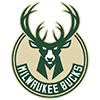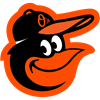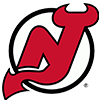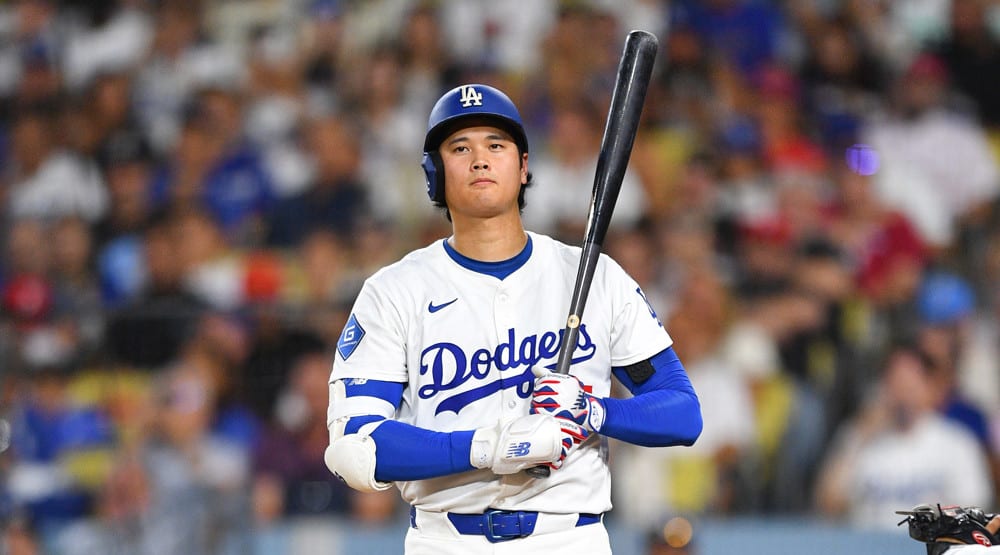However, while those decisions may appear easy on the surface, there are some common pitfalls you'll want to avoid, and some spots on the margins where it's easy to leave value on the table. Let's run through the thought processes I use when making these decisions for my own rosters to see how they can apply to your own teams.
Who To Keep
The most important season for a fantasy owner is always the current one. Once you have a set of projected stats and earnings that you're comfortable with (whether you generate them yourself, use our auction values calculator, or take the average of a number of different projection systems), divide your existing roster into three groups: Locks (players earning at least $5 more than their salary), Bubbles (players earning within $5 of their salary, on either side), and Likely Cuts (players getting paid at least $5 more than their projected earnings).
The Likely Cuts group are players who, under normal circumstances, you want no part of. However, in leagues with extremely high inflation, some of the players in this group may fall
However, while those decisions may appear easy on the surface, there are some common pitfalls you'll want to avoid, and some spots on the margins where it's easy to leave value on the table. Let's run through the thought processes I use when making these decisions for my own rosters to see how they can apply to your own teams.
Who To Keep
The most important season for a fantasy owner is always the current one. Once you have a set of projected stats and earnings that you're comfortable with (whether you generate them yourself, use our auction values calculator, or take the average of a number of different projection systems), divide your existing roster into three groups: Locks (players earning at least $5 more than their salary), Bubbles (players earning within $5 of their salary, on either side), and Likely Cuts (players getting paid at least $5 more than their projected earnings).
The Likely Cuts group are players who, under normal circumstances, you want no part of. However, in leagues with extremely high inflation, some of the players in this group may fall into a "gray area" in which they're getting paid more than you project them to earn, but less than they'll probably go for at the auction table. For instance, if inflation in your league typically runs at around 33 percent, a $30 player could cost $40 or more on the open market, in which case he suddenly looks like a relative bargain as a keeper at $35. You don't want too many of these players on your protected list, but particularly in situations where they provide you with a scarce commodity – an elite catcher or base stealer, for example – hanging onto them can make some sense. (See below for more on how to calculate inflation for your league). Otherwise, the players in this group can be safely waived, or if they have a big enough name, placed on your trade block to see if one of your league-mates will voluntarily cripple their chances of winning by acquiring them at their inflated salary.
The Bubble group require a little more study. A player in this group might be getting paid a couple bucks more than their projected earnings, but if they also produce in a rare category like saves or steals, or fill a roster spot where talent is hard to find, it could be worth keeping them anyway. If you let them go, it could be tough to replace their stats for the same relative price. Players with significant upside also fit into this category because of their increased chance of breaking out and/or exceeding their projections. Think of it like implied odds in poker. You're not only judging the payoff based on what's currently in the pot (the 2017 season), but on what will end up in the pot if your hand hits (future seasons). Examples of non-prospects who fall into this category for me include Daniel Norris, who could be this year's James Paxton with just a slight improvement in his command, and Ryan Zimmerman, who seemed to bottom out at the plate in 2016 but still generated elite exit velocity.
How Long To Keep Them
In leagues that use a contract structure (rather than dynasty formats where you simply keep players for as long as you want them), you may want to sign some of your Locks and Bubble players with upside to long-term deals if their initial contracts are up. The basic calculation isn't that difficult. Figure out the maximum contract length you can sign the player to, so that his salary is still beneath his projected earnings. Figure out the total profit you'd earn over the life of that contract. Then do the same for a contract one year shorter, and so on all the way back to simply keeping the player for his option year.
For instance, perhaps you're lucky enough to have Carlos Correa in a 12-team AL-only league. His rookie season was 2015, so heading into this season you'll need to sign him long-term if you want to keep him past 2017. (Pro tip: you do). His earnings this year, using RotoWire's projections, will be $31. If his current salary is $12, you can simply keep him for his option year and bank $19 in profit. However, take a look at your potential profit is you extend him, using the standard $5 salary bump per additional year:
| 1 year ($12/yr) | 2 years ($17/yr) | 3 years ($22/yr) | 4 years ($27/yr) | |
| Total salary | $12 | $34 | $66 | $108 |
| Total earnings | $31 | $62 | $93 | $124 |
| Total profit | $19 | $28 | $27 | $16 |
| Profit/year | $19 | $14 | $9 | $4 |
On the surface, the two-year and three-year contracts look like your best bets. They maximize your total profit, but the two-year deal gives you a better profit per season. However, with an elite player like Correa, there are other considerations. One, there's a very good chance his earnings will increase in future seasons. Our $31 projection is based on modest production increases from 2016, but 22-year-old wunderkinds have a habit of taking giant leaps forward rather than baby steps. Let's look at the chart again, but change his projected earnings to $40 for 2019 and 2020. Now the three-year and four-year contracts look like your best options.
| 1 year ($12/yr) | 2 years ($17/yr) | 3 years ($22/yr) | 4 years ($27/yr) | |
| Total salary | $12 | $34 | $66 | $108 |
| Total earnings | $31 | $62 | $102 | $142 |
| Total profit | $19 | $28 | $36 | $34 |
| Profit/year | $19 | $14 | $12 | $8.50 |
Two, players with elite name value like Correa can command a great return if you decide to trade them. Dealing away a player of his caliber is a tough decision, especially when you've had him on your roster since the beginning of his career, but such trades can dramatically revitalize a fantasy roster if done right. Signing him to a longer deal gives you more opportunities to do so, should the need arise, and will get you a better return than trading a player on the final year of his contract.
Finally, before making a final decision on a contract, you need to be as objective as possible about your team's place on the success cycle. If, for instance, you think you can compete for a title in 2017 but don't have much of a core to support a run past that, it might be better to sign players to shorter deals (or just keep them for their option years) and maximize your immediate profit, rather than spreading out the rewards over multiple years. Of course, in the case of an elite player like Correa, he could well help you win a championship in 2017 and be a foundation piece for your next title run in 2019 or 2020, but looking too far ahead can cause you to miss out on that initial title run as you try to get your roster to serve two masters. Again, the most important season is the current one.
Calculating Inflation
Inflation is the scourge of all keeper leagues. The basic definition is this: inflation is the amount by which players bought at auction have their salary increased due to other players being protected at salaries below their market value. If you keep a player at $1 who would otherwise have gone for $11 at the table, that's $10 more you have to spend on other players. Maybe you use all $10 at once, and get a $30 player for $40, or maybe you spread it around, or maybe you even blow the auction and leave it unspent, but regardless of what you do with that $10, it's there in your budget to help you drive salaries up.
You also should consider it from another angle. In general economic terms, inflation reduces the value of future earnings. $1 earned in 2017 is worth more to you than a dollar earned in 2018, which is worth more than one earned in 2019 etc. In keeper league terms, however, what gets devalued is not earnings, but your auction budget. In a redraft league, $260 at the auction table should get you somewhere around $260 in player value. In a keeper league, thanks to inflation, if you protect no one and head to the auction table with $260, you will walk away with far less than $260 in player value.
When it comes to making your contract decisions, leagues with heavy inflation should not, as you might think, necessarily encourage you to bank short-term profit. The extra $5 you're saving by cutting a contract short a year isn't going to get you $5 in actual value at the table. Instead, you may want to protect your gains for as long as possible. Let's look at the original Correa chart again (with a flat $31 projection per season), this time with a hypothetical 33 percent rate of inflation factored in:
| 1 year ($12/yr) | 2 years ($17/yr) | 3 years ($22/yr) | 4 years ($27/yr) | |
| Total salary | $12 | $34 | $66 | $108 |
| Total earnings | $31 | $62 | $93 | $124 |
| Adjusted profit | $14.29 | $21.05 | $20.30 | $12.03 |
| Adjusted profit/yr | $14.29 | $10.53 | $6.77 | $3.01 |
In terms of total profit, the three-year deal is now basically on par with the two-year, and just keeping Correa for his option year looks a lot less appealing.
Other factors you may want to consider before signing a player to a long-term deal:
- You should almost always go short on players with a history of getting hurt, whether it's a hitter whose hamstrings act up with depressing frequency or a pitcher who never seems to last 30 starts. The worst thing for your ROI is to sign a player and then be stuck with him when he breaks down and returns little to no value at all.
- How difficult will the player be to replace once his contract ends? If a player doesn't have a particularly unique profile (your standard off-the-shelf 20 homer corner outfielder, for instance, or a starting pitcher with solid ratios who doesn't strike out a ton of guys) you're often better off going short on his deal, and banking that profit. On the other hand, a player who provides something fairly rare might be worth extending an extra year if the profit valuation is fairly close.
- How volatile is the player's production? Players who alternate great years with mediocre ones, or who had an unexpected production spike, should be viewed with caution and signed to a shorter deal. When a contract seems like a large risk for little reward, you should stay away. Note that catchers (due to the inherent injury risk that comes with playing the position) and closers (due to the large turnover rate and sudden collapses that seem to go hand-in-hand with the role) should pretty much always be viewed as volatile.
- How good is a player's organization at developing and nurturing players of his type? The Mets and Pirates, for instance, have pitching coaches with excellent reputations for developing starting pitchers, so that might give you the confidence to go an extra year on Noah Syndergaard. Whether a player's home park is friendly to him is also worth thinking about, although in theory that should already be priced in to his projections.
- Finally, how much do you like the player? It's always more fun to have guys on your team that you actively root for. Since projections are never dead accurate anyway, if you have a crush on Marcus Stroman and the numbers don't scream for one particular contract over another, why not keep him for the extra year?
Which Kids Are Worth Your Time?
Once you've determined your major league keepers, it's time to take a look at your prospects. In dynasty, keep-forever formats, most of the time you'll simply hang onto a guy until he's no longer a prospect (either because he graduated to the majors or flamed out). In leagues where you are only allowed to keep a limited number of prospects, however, you may need to make some tough decisions on which prospects deserve to be protected.
For instance, what's his prospect ranking? In a shallow mixed league where only 60 or so prospects get protected and selected each year, a player who ranks lower than that – say, Sam Travis – isn't worth hanging onto. Toss him back and try to fill that spot with a better prospect.
Also, consider how far away a player is not just from getting to the majors, but from providing you with a profit. In traditional Ultra formats, where each reserve round pick has a specific salary assigned, a prospect might not project as valuable enough to match his eventual salary. Pitchers who the experts have tabbed with a mid-rotation ceiling, outfielders without one standout offensive tool, shortstops whose glove is still ahead of their bat... these are prospects who might have long major league careers, but do they have much profit potential? If they don't, cut them loose and either get a better prospect, or re-draft the player you let go in a later round and at a lower salary.
Finally, if a player isn't a top prospect, does he at least have a major league job? In some formats, a player on a 25-man roster can't be kept as a minor leaguer and has to take up an active roster spot heading into the auction, but in deep leagues that aren't so strict, a fringy prospect who wins a bench or bullpen spot could provide you with some crucial extra depth, and every once in a while they turn into Aledmys Diaz. A Rule 5 pick or young player whose prospect status has faded but is out of minor league options, such as Jose Urena, could provide you with some useful numbers from a minor league slot without costing any of your auction budget.



























